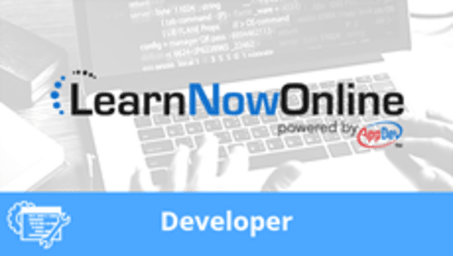
SQL 2014 Developer, Part 13 of 13: Working with XML
Course description
In this course we’ll explore SQL Server’s support for XML and how it’s improved since being introduced in SQL Server 2000. We’ll discuss SQL Server’s native XML data type—how to declare it as a variable or table column, how it differs from other data types, and how to load data into it using SELECT…FOR XML and the OPENROWSET function. Next you’ll learn the importance of indexing XML columns and that SQL Server supports multiple types of XML indexes including primary, secondary, and the Selective XML index. Then we’ll talk about XML Schemas—how they’re used to validate XML documents, SQL Server’s support for Lax Validation, how to register XML schemas and associate them with XML columns for validation. You’ll learn how to use the XML data type’s native XQuery methods as well as an introduction to FLWOR (flower) expressions. Finally, we’ll wrap up with some best practices and points to consider when you’re deciding if storing data as XML is an appropriate solution for your database application.
Each LearnNowOnline training course is made up of Modules (typically an hour in length). Within each module there are Topics (typically 15-30 minutes each) and Subtopics (typically 2-5 minutes each). There is a Post Exam for each Module that must be passed with a score of 70% or higher to successfully and fully complete the course.
Prerequisites
This course assumes that you have a basic familiarity with the concept of relational databases and a basic understanding of what SQL Server is and the high-level tools in it, as well as how to create and manage objects using Management Studio. You should also have a basic understanding of how SQL Server implements security, including its authentication and authorization schemes, and how to assign permissions on securable objects to principals. You should know the fundamentals of Transact-SQL to write queries to retrieve and update data, and how to execute scripts using the query editor in Management Studio. It will be very helpful, but not absolutely necessary, to have experience with .NET development using Visual Studio 2010 or 2012 for the portions of the course that deal with SQLCLR development. The .NET code included in this course is written in C#, but if you prefer Visual Basic it should be fairly easy to convert the code.
Meet the expert
Frank Tillinghast
Frank Tillinghast is a senior consultant with MTOW Software Solutions. He is a Microsoft Certified Solution Developer and has been developing applications for over 15 years. Most of his time is spent consulting for companies nationwide with troubled projects or mentoring projects to successful completion. When he is not developing software or mentoring clients, Frank is teaching other developers. He has taught thousands of application developers how to create business solutions with Visual Studio .NET. VB.NET, ASP.NET, Visual C#, and SQL Server.
Video Runtime
73 Minutes
Time to complete
276 Minutes
Course Outline
Working with XML
XML Data Type (28:23)
- Introduction (00:40)
- The XML Data Type (00:33)
- Declaring XML Objects (02:32)
- Demo: XML Type Variable (02:57)
- Loading Data into XML Objects (00:37)
- Using SELECT...FOR XML (01:44)
- Bulk Loading (01:38)
- Demo: Direct Assignment (01:08)
- Demo: FOR XML (01:32)
- Demo: Bulk Loading (02:13)
- Indexing XML Columns (00:42)
- Primary XML Indexes (01:17)
- Secondary XML Indexes (01:38)
- Selective XML Indexes (03:24)
- Demo: Indexing XML (05:06)
- Summary (00:34)
XML Schemas (17:32)
- Introduction (00:37)
- XML Schema Collections (01:01)
- Typed and Untyped XML (01:23)
- Schema Basics (00:37)
- Demo: XML Schema (00:53)
- Lax Validation (01:37)
- Registering Schemas (01:27)
- Demo: Registering Schemas (02:55)
- Viewing Stored Schemas (01:21)
- sys.xml_schema (01:43)
- xml_schema_namespace (01:13)
- Demo: Catalog Views (02:17)
- Summary (00:22)
Querying XML (20:18)
- Introduction (00:31)
- Querying XML (00:47)
- Using XQuery (01:10)
- XQuery Methods (02:18)
- XQuery FLWOR Statement (01:04)
- Demo: XQuery Methods (02:31)
- Demo: FLWOR Expressions (02:39)
- FOR XML (00:49)
- Demo: FOR XML (03:32)
- OPENXML (01:45)
- Demo: OPENXML (02:39)
- Summary (00:25)
Best Practices (07:43)
- Introduction (00:34)
- Best Practices (00:36)
- Relational vs. XML Data Model (01:40)
- Reasons to Index XML Columns (02:55)
- Querying (01:22)
- Summary (00:34)







